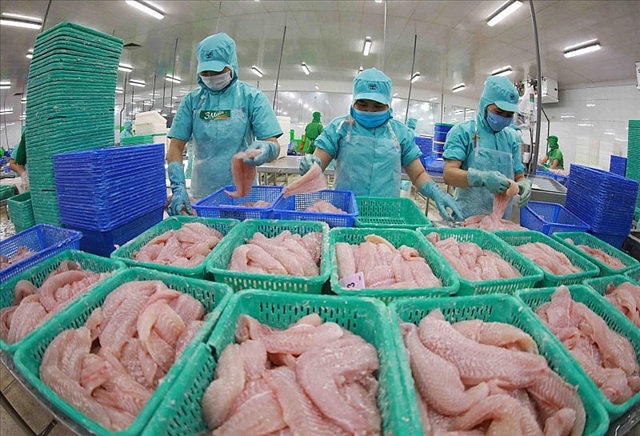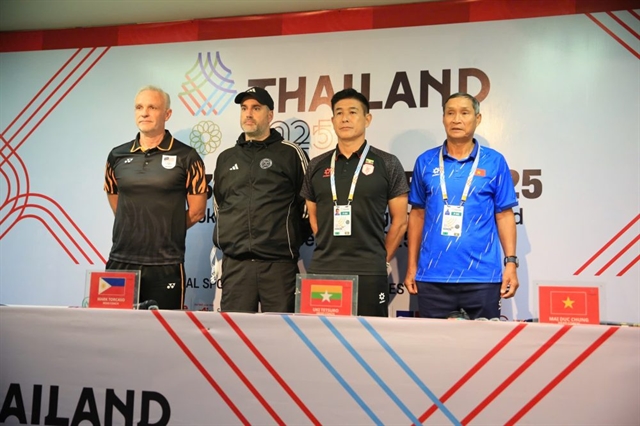 Society
Society


|
| Vietnamese exported seafood products must comply strict regulations of European Union. VNA/VNS Photo |
HÀ NỘI – The Vietnamese seafood industry is actively adapting to new European Union (EU) regulations on maximum residue levels (MRLs) of inorganic arsenic in fish and other seafood.
Recently, Việt Nam's SPS Office (Sanitary and Phytosanitary Notification Authority and Enquiry Point), received notification from the SPS Committee Secretariat of the World Trade Organization (WTO) regarding a draft amendment by the European Food Safety Authority (EFSA) to Regulation (EU) No 2023/915, which sets maximum residue levels (MRLs) for inorganic arsenic in fish and other seafood.
According to the Deputy Director of Việt Nam’s SPS Office, Ngô Xuân Nam, over the past five years, no inorganic arsenic contamination has been detected in Vietnamese seafood. However, in response to the new EU regulations, proactive adaptation is now a key focus for the industry.
The EU has increased border inspections on several Vietnamese agricultural products, Nam said.
"Although the EU's draft regulation specifically addresses inorganic arsenic and we have not detected its presence in our seafood in recent years, this does not mean we should be complacent," Nam said.
Proactively adapting to SPS measures imposed by import markets, especially the EU, is a strategy that regulatory bodies in Việt Nam are actively implementing.
To ensure compliance, Việt Nam’s SPS Office has swiftly updated relevant authorities, agencies and industry associations including the Department of Quality, Processing, and Market Development, Directorate of Fisheries and Fisheries Surveillance, Department of Food Safety (Ministry of Health) and Việt Nam Association of Seafood Exporters and Producers (VASEP).
Meanwhile, the Directorate of Fisheries and the Department of Fisheries Surveillance (under the Ministry of Agriculture and Environment) has directed monitoring programmes to assess and control inorganic arsenic levels in aquaculture water and sediment.
Nam said that arsenic contamination is rarely detected in seafood processing, but is mainly present in farming environments, particularly in the water, therefore, strict water quality control in aquaculture areas is crucial.
On the business side, Vietnamese seafood producers and processors are strengthening monitoring of inorganic arsenic levels in raw materials. Companies are also investing in advanced technology and production processes to ensure products meet EU food safety standards.
EU’s new regulation
Under the EU's draft amendment, that is expected to be officially issued and taken effect in July this year, the MRLs for inorganic arsenic in fish and seafood will range from 0.05 to 1.5 ppm.
The EU will allow some existing seafood products on the market to remain available until their expiration dates.
The draft regulation specifies MRLs based on the wet weight of the product. If fish are exported whole, the MRLs will be calculated based on size of the entire fish.
In addition to fish, the EU is also applying MRLs for inorganic arsenic to crustaceans such as crabs and bivalve molluscs like scallops.
Previously, the EU had not set specific limits for inorganic arsenic in fish and seafood. This new draft regulation aims to solicit feedback from WTO member countries, while prioritising consumer health protection within the EU and aligning with SPS Agreement requirements.
In reality, some aquatic organisms naturally accumulate trace amounts of inorganic arsenic due to its presence in water and sediment. Arsenic enters the food chain via water and sediment pollution, aquatic organisms absorbing arsenic through respiration and contaminated feed sources
Additionally, seafood contamination can result from industrial and agricultural activities, such as mining and metallurgy industries, pesticide, dye and textile manufacturing, discharge of arsenic-containing wastewater, fertiliser and pesticide runoff into rivers and lakes, untreated household wastewater and natural arsenic leaching from the surface into groundwater
As the EU strengthens its controls on inorganic arsenic in imported seafood, Vietnamese exporters are actively adjusting to maintain market access. Industry players are enhancing quality control measures to ensure compliance.
This strategy also reinforces the reputation and brand of Vietnamese seafood.
Currently, Vietnamese seafood holds a 3.7 per cent share of the EU’s total seafood imports. Việt Nam is the fifth-largest non-EU seafood supplier into the EU market and the second-largest from Asia, after China.
Last year, the Vietnamese seafood industry achieved impressive export growth, reaching US$10 billion, a 12 per cent increase from 2023. Of these, exports to the EU amounted to $1 billion.
According to VASEP, the EU-Việt Nam Free Trade Agreement (EVFTA) is expected to boost Vietnamese seafood exports by approximately two per cent annually over the period 2020 to 2030. VNS




